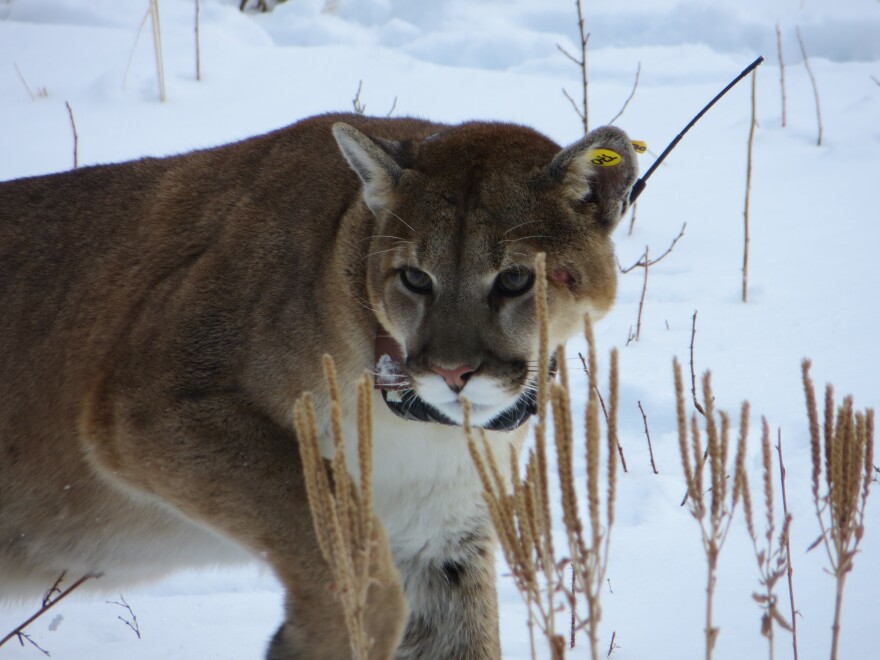
Mountain lions are notoriously elusive creatures, and although they have been studied in South Dakota over the last ten years researchers say there’s still more to learn. State biologists say they are learning what lions eat, where they prefer to live, and how long they are expected to survive.
Wildlife officials say there are currently twenty-eight mountain lions in South Dakota that are fitted with radio collars and that is where researchers are gaining much of their information. They say lions in the Black Hills appear to be in good health despite occasional harsh weather conditions, being hunted by humans, and stiff competition for food.
South Dakota Game, Fish & Parks Big Game Biologist Kevin Robling says lions in the state seem to be in prime condition with good fat reserves. He says so far they’ve not seen any that are sick or emaciated and they seem to be eating well.
“A study that we recently conducted here in the Hills looking at their diets – approximately eighty percent of their diet is deer and the other twenty percent is a combination of small rodents, porcupines, groundhogs, and some elk, some big horn sheep,” says Robling.
Robling says adult lions typically eat close to forty deer-sized meals each year. They are opportunistic though and will eat whatever is available – even scavenging old carcasses at times.
Robling says the Black Hills are prime real estate for lions.
“They do seem to avoid open areas, open meadows, that sort of thing. They kind of have travel corridors that follow timber lines, tree lines, and then steep slope. Terrain ruggedness is a pretty important characteristic to mountain lion habitat so wherever the terrain is steep and rugged is a good place to find lions,” says Robling.
Although the Black Hills provides mountain lions with their preferred meal and terrain, Robling says the population is declining and survival rates are low.
“The last few years though our survival rates are right around that thirty to forty percent for the males and right around sixty to seventy-five for the females,” says Robling.
Robling says the low survival rates are partly due to the lion hunting season and partly due to the fact that male lions are extremely territorial and will kill other lions. He says they also take into account that female cats only give birth to about three kittens every other year.





